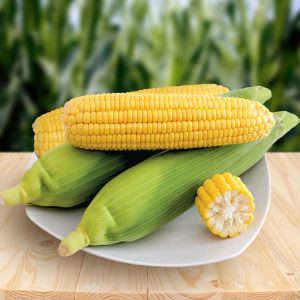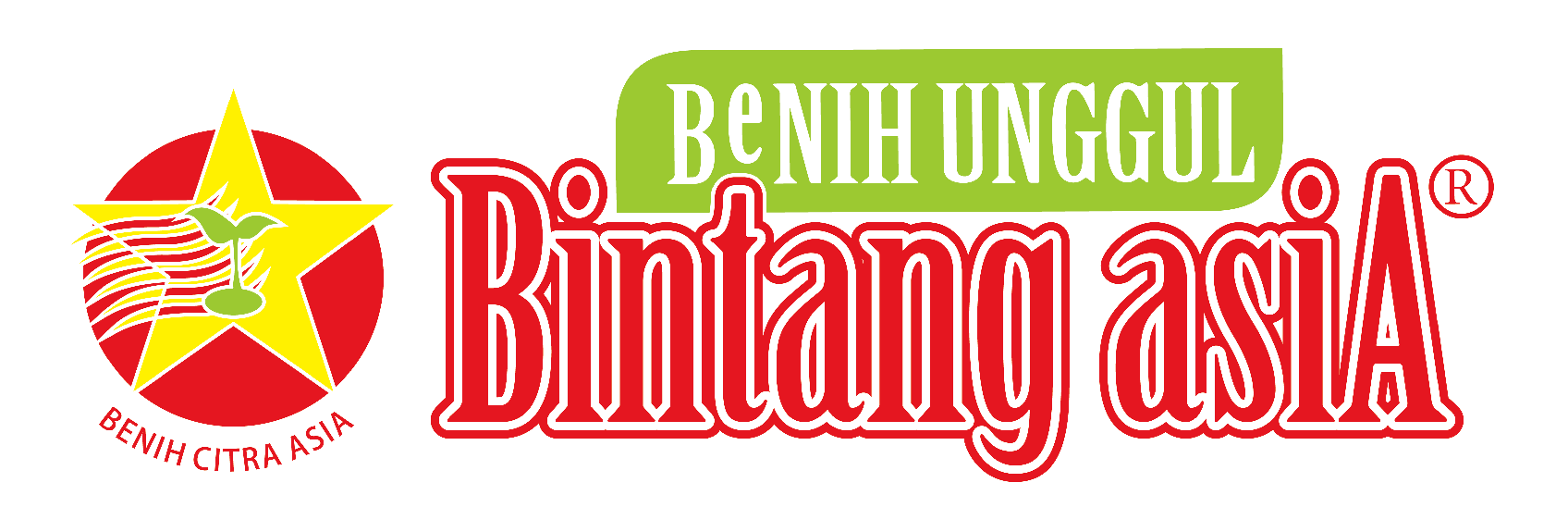How to Plant Sweet Corn for Big Fruits and Fertilization
Corn plants have fiber roots consisting of primary, secondary, and adventitious roots. Primary roots are temporary, while the surviving roots are adventitious roots or fiber roots. The function of primary and secondary roots will be replaced permanently. In contrast, adventitious roots are other forms that grow from the base of the stem above the ground, then penetrate and enter the soil. The function of adventitious roots is to strengthen the formation of corn stalks and increase the absorption of water and soil salt.

Flowers on corn plants consist of male and female flowers located separately, while female flowers are found on corn cobs. Corn seeds arranged in cobs are cobs formed on female flowers after fertilization occurs at 7 days to 10 days of seed development. The first development is slow.
Temperature
The desired corn plant temperature ranges from 21ºC – 30ºC. However, for good maize growth, especially hybrid maize, the optimal temperature is 23ºC – 27ºC. A temperature of about 25ºC will result in faster germination of corn seeds. A high temperature of more than 40ºC will cause damage to the embryo so that the plant does not germinate.
pH conditions
Good pH conditions for the growth of hybrid maize ranged from 5.5 to 7.0, and the optimal pH was 6.8, especially during flowering and seed filling. The average rainfall for the ideal development of corn plants is about 250 mm / year to 2000 mm/year. Hybrid corn will grow well in areas with an altitude of more than 5,000 m above sea level.
Corn is beneficial for human or animal life. Corn is the second staple food after rice. Corn is one of the foods that contain hydrated charcoal. It can replace (substitute) rice.
Corn is a fiber root plant consisting of root types, namely roots and cement, adventitious roots and aerial roots, and seminal roots growing from roots and embryos. Adventitious roots are also called support roots. This root is from the bottom of the book—about 4 cm below ground level. Aerial roots are roots that extend from two or more of the lowest nodes near the soil surface.
The branch of the corn are cylindrical and stalks. In the book section, buds will appear, which develop into cobs. The height of the corn depends on the variety, generally around 100 – 300 cm. The corn leaves stretch and comes out of the stem book. The number of leaves consists of 8-48 strands depending on the variety. Between the petals and the blade, there is a leaf tongue called Ligula. The function of Ligula is to prevent water from entering the leaf petals and stems.
Corn Type
There are many types of corn, such as:
Horse tooth corn (Zea Mays Indentata)
Pearl Corn (Zea Mays Indurata)
Sweet corn (Zea Mays Saccharata)
Popcorn (Zea Mays Everta)
Corn flour (Zea Mays Amylaceae)
Corn pods (Zea Mays Tunicata)
Glutinous corn (Zea Mays ceratina)
In the process of growing corn, plants are divided into two stages, namely:
Vegetative stage
In this vegetative stage through the shooting phase, followed by the vegetative growth phase, the roots of the leaves and stems are fast. Eventually, the vegetative growth becomes slow, which is called the generative stage.
Generative stage
This stage is named after the formation of the primordia. The flowering process includes pollination and fertilization. Pollination in corn plants is usually assisted by the wind, namely by spreading pollen and then dropping it on the stalk. The location of male and female flowers is not in one place. Male flowers are at the end of the flower stalk, while female flowers are in the middle of the stem or cob.
It is necessary to maintain the purity of the cultivated varieties’ seeds and the occurrence of cross-pollination in corn plants. In pollination steps, pollen does not have to stick to the stigma. The pistil can cause the pollination process to continue. The pistil is in the shape of corn hair when pressed with pollen. The development and growth of pollen continue. The growth process continues pollination events that can occur as long as pollen is attached to the pistil. Then the oviduct meets the egg.
Growing Conditions
Rainfall during the planting month was relatively high, namely 309 mm and 501 mm (average 427 mm/month). The rainfall value was relatively high compared to the rainfall distribution, which is ideal for corn growth, 200 mm/month (Sutoro et al., 1988) and potentially causes leaching of nutrients found in soil.
In the cultivation step, several things need to be considered, including growing conditions for corn plant growth conditions, namely an altitude of 5-1,200 m above sea level, 80% humidity, pH 2.3, and a temperature of 15-20 degrees Celsius.
Cultivation Technique
Seed Preparation
Seeds are also seeds of corn plants that grow into young plants. These young plants become mature plants that can produce flowers and fruit. Quality seed quality plays an important role and increasing production. Seed quality includes physical quality, physiological, genetic seed.
Land Preparation
Soil treatment aims to improve the condition of the soil to become loose so that maximum plant root growth. Tillage will also improve soil texture. The stages of processing sweet corn plants, namely:
- Make beds with a width of 1 m, 30 m, and length according to the soil.
- Mix the soil to a depth of 30-40 cm
- Sweet Corn Fertilization (Organic And Non-Organic)
- Manure is given before the mulch is installed and leveled on the ground. Application of SP 36, ZA, Kcl Organic fertilizer with a ratio of 1: 1: serves to support vegetative plants, fertilization method by leveling the beds with a distance of 1 m and given 100 g.
Mulch Installation
Mulch is plastic for the bed. There are 2 colors of silver on the top, while black on the bottom. Mulch function:
- To suppress weed growth
- Hold/maintain moisture
- Prevent/reduce water evaporation
- Save labor costs in weeding
- Block reflections to repel pests
- Photosynthesis through a reflection of sunlight
Making commodity holes for corn plants, spacing 40 – 30 cm. With the bed covered with mulch, which has been perforated. After that, the stripes are 2-3 cm.
Planting
Planting in the field is done using seeds, not seeds. Before planting the seeds, we first sow them, with:
- Seeds are stored in pots with media: manure, husk charcoal, for 7 days;
- Apply organic fertilizer;
- After planting 3-5 leaves, ready to grow.
- Planting is done in holes that have been given fertilizer with a depth of 3 cm with 2 seeds per planting hole and then covered with soil. The distance used is 75 cm x 25 cm.
Sprinkling
Watering is done in the morning and evening to prevent the plants from wilting. If it’s dry season, water it every day.
Weeding
Weeding is done to control weeds around the factory 3 times. The first weeding is done at the age of 21 days by removing weeds. Weeding 2 was carried out at 42 hours using Kored. Weeding refers to removing weeds or removing weeds for cultivated plants. As a result, the leaves become balanced. The way to control it is to pull the grass that grows around the plant to overcome the competition for nutrients.
Spacing and Embroidering
Thinning is done in 7 days by leaving one plant that has good growth. While embroidery is done if there are no plants in the planting hole that grow or die.
Planting
This herb is meant to strengthen plant formations and bring nutrients closer together. This conception was carried out simultaneously with the second weeding, namely at the age of 42 dap.
To prevent pest attack on the first growth and plants were given Furadan 3G insecticide when planting as much as 20 kg/ha (9 g / plot) to the planting hole. Subsequent pest control by spraying determinate insecticide 2.5 EC with a concentration of 2 ml/liter, the solution was given at the age of 20 days, 27 days, and 33 days after that.
The diseases that attack are:
Downy Mildew
This disease is famous for corn plants caused by rampant fungus. The affected plants tend to die. Farmers fear this disease. How to control it; the plants are removed if attacked and then crushed or sprayed with a fungicide.
Leaf Spots
This disease is found in humid areas, which is caused by a fungus
How to control it; regulate soil moisture so that it is not damp, or spray pesticides.
Rust
This plant grows on old plants. The disease is caused by the fungus Pucunia songin. The result: the seeds are imperfect. The fertilization process is not formed. Control methods: sanitation in the corn planting area, removing plants if attacked, spray fungicide pesticides.
Harvest
Harvesting is done when the plant is 60 days old, marked with a yellow bag. The seeds are pretty complicated and shiny. If pierced with two thumbs, the moisture content of the sources is around 25% – 30%.



Pretty! This has been an incredibly wonderful article. Many thanks for providing this info.
thank you for the appreciation
What’sup, I log on to your blogs regularly. Your story-telling stgyle
is awesome, keep doing what you’re doing!
my site … Grand Exchange Items OSRS Ale of the gods
Thank you for visiting our blog
I’d like to find out more? I’d love to find out more details.
You helped me a lot with this post. I love the subject and I hope you continue to write excellent articles like this.
I really appreciate your help
Thank you for writing this post!
You helped me a lot by posting this article and I love what I’m learning.
The articles you write help me a lot and I like the topic
Please tell me more about your excellent articles
The articles you write help me a lot and I like the topic